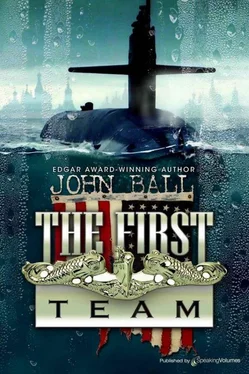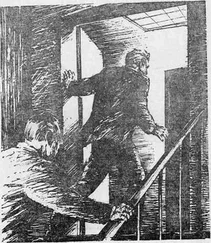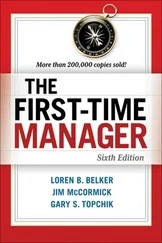Джон Болл - The First Team
Здесь есть возможность читать онлайн «Джон Болл - The First Team» весь текст электронной книги совершенно бесплатно (целиком полную версию без сокращений). В некоторых случаях можно слушать аудио, скачать через торрент в формате fb2 и присутствует краткое содержание. Год выпуска: 2013, Жанр: Триллер, на английском языке. Описание произведения, (предисловие) а так же отзывы посетителей доступны на портале библиотеки ЛибКат.
- Название:The First Team
- Автор:
- Жанр:
- Год:2013
- ISBN:нет данных
- Рейтинг книги:5 / 5. Голосов: 1
-
Избранное:Добавить в избранное
- Отзывы:
-
Ваша оценка:
- 100
- 1
- 2
- 3
- 4
- 5
The First Team: краткое содержание, описание и аннотация
Предлагаем к чтению аннотацию, описание, краткое содержание или предисловие (зависит от того, что написал сам автор книги «The First Team»). Если вы не нашли необходимую информацию о книге — напишите в комментариях, мы постараемся отыскать её.
Student protesters are being slaughtered in the Midwest.
The Jewish pogroms have begun.
You are now living in Soviet — occupied America!
One nuclear submarine and a handful of determined patriots against the combined might of Russia and Soviet-occupied America… The Most Explosive and Gripping “What If” Novel of Our Time!
First published January 1971
The First Team — читать онлайн бесплатно полную книгу (весь текст) целиком
Ниже представлен текст книги, разбитый по страницам. Система сохранения места последней прочитанной страницы, позволяет с удобством читать онлайн бесплатно книгу «The First Team», без необходимости каждый раз заново искать на чём Вы остановились. Поставьте закладку, и сможете в любой момент перейти на страницу, на которой закончили чтение.
Интервал:
Закладка:
The mechanical and supply details went of course to Stanley Cumberland. Pappas, with his near genius for detailed planning and organization, was given the job of making everything fit and preparing a full set of alternate plans to meet every visible contingency.
Ed Higbee was committed to the second phase of the master plan, to be activated if the first part succeeded. There his almost uncanny knowledge of psychology, propaganda, news distribution, and negotiation would be of prime value. That left one more vastly important job and two extraordinarily capable men to handle it — the protection of the Magsaysay from the moment that her lines were cast off until she was safely hidden under the vast waters of the open Pacific. General Carlton Gifford had accepted the assignment with dedication and relish; it was right up his alley. His first action had been to request the help of Lieutenant Colonel Henry Prichard, the search and rescue specialist who was celebrated for a cast-iron nerve and the ability to handle himself even during extreme emergencies. More than forty men marked for death had been saved by him and not one of them had ever seen him display the least recognition of fear.
Together the two Air Force men had gone to work systematically to produce a miracle, and the magnitude of the task did not dismay them. They had begun by carrying on a highly selective recruiting program concentrated on the West Coast. They had found people in the armed forces, in law-enforcement agencies, and in such civilian organizations as Mensa and the Masonic Lodge. The Japa-nese-American Citizens League provided help and a few were chosen through the Knights of Columbus. Ham radio operators were very carefully culled over and a handful were selected. Lastly, a few men were picked from the ranks of the Teamsters Union. When the job had been completed the necessary backup force numbered almost five hundred men and a few women. Of all of these very few knew what they were to do or why, but they were all highly qualified in one way or another and every one of them had a proven ability to keep his or her mouth shut.
The next step had been the organization of this work force into a cell system so that any possible leak could be stopped within a local area involving, at the maximum, ten people. Certain outstanding individuals were chosen for supervisory duty, and they in turn came under the direction of full-time field personnel who reported directly to the headquarters of Thomas Jefferson.
In the meantime, detailed operational plans had already been drawn up. It was recognized from the start that a high degree of flexibility would have to be incorporated into every phase of the effort since a large number of unpredictable variables could not be eliminated. But variables or not, the job had to be done and Gifford was determined that it would be.
With the aid of the personnel selected, a close day-to-day watch was kept over the enemy throughout the San Francisco region. Every piece of equipment that was taken over was noted and recorded. The people concerned were evaluated and in some cases probed for weaknesses. Whatever the enemy did, wherever he established a force of any kind, he was watched and the information gained was passed on to the operations room. Colonel Prichard was in charge of that. Laid out on a huge table he had a detailed presentation of the San Francisco Bay area and all of its military facilities. Everything that the enemy did was noted and marked on it. The board was kept up to date on an hour-by-hour basis and manned around the clock.
As S (for sailing) day grew closer, the operational orders were prepared and passed to the waiting people in the field. Most of them still did not know what was to take place, but they did know that a major move was to be made and that they would be part of it. Every enemy post or installation that could in any way interfere with the safe departure of the Magsaysay from Hunters Point was kept under surveillance and a specific team was appointed to deal with it. To minimize risk and protect secrecy to the utmost, General Gifford confined most of the scheduled efforts to apparently simple, nonspectacular procedures which in many cases could be interpreted as accidents or simple bad luck — unless someone took the time to put them all together into a single pattern. But that could not be done until after the event, and then it would be too late.
Forty-eight hours before S time the operational personnel were deployed. In certain parts of San Francisco and its environs, repair and construction crews showed up to work on street installations. In each case they had the proper blueprints and work orders; their legitimacy was established. They closed off some roadways — as they apparently had to — and began to dig trenches in the usual manner. These activities were widely scattered, and when they were viewed against the background of all of the other street work going on at the same time, no visible pattern was apparent.
At Beale Air Force Base three teams moved in and positioned themselves well before they were due to go into action. At various other military installations where the enemy was present and had any combat capability, other personnel already on the job were backed up and reenforced. All of this was made easier because the enemy was still relatively new in the area, not yet deployed in any major strength, and convinced that the fervent desire of the United States for peace at any cost was adequate insurance against any uprisings.
At Hamilton Air Force Base three enemy fighter pilots who had been assigned to put on a show of force should that ever become necessary regularly dined at the only local facility where their patronage appeared to be welcome. They liked American food and the good liquor that could be had to go along with it. The only thing missing was suitable female company, but that had proved to be very hard to come by in the United States under the circumstances.
On the evening before S day they ate as usual, but the occasion was marked by the fact that three American girls were seated unescorted not too far away. After some discussion the pilots tried an approach. It was not successful, but on the other hand it did not appear to be a flat rejection. After a little more talk, they decided to try again. This time they had better luck.
All that was being done was known in general terms to the captain of the Magsaysay; each place where something might go wrong was known to him also, and he was at least forewarned. The most critical area was the possibility of air attack; surprise would help a great deal in forestalling any effective land-based action against the submarine, but even traveling at flank speed she would lie exposed for over an hour on the surface, and in that time an air attack against her could be mounted and carried out.
Against such an action she would be helpless; the water she would be in would not allow her to maneuver and she carried no antiaircraft defense whatever. The Bay area was surrounded by military installations where the enemy was in possession. Almost from the moment that she had slipped her moorings the thought of air attack had been foremost in the captain’s mind; once Blossom Rock had been cleared and the Golden Gate lay ahead, he knew that the time of greatest peril was at hand.
In his Washington headquarters Colonel Rostovitch had been informed within minutes of his own emergency phone call that in some totally unexplained manner the Magsaysay had been seized and was attempting to put out to sea. With furious energy he began to mount a counterattack. He was not too familiar with the geography of the Bay region, but he knew in general terms that the fugitive submarine would have to negotiate some inland waters before she would be able to reach the Pacific, and that was where she would have to be caught.
Читать дальшеИнтервал:
Закладка:
Похожие книги на «The First Team»
Представляем Вашему вниманию похожие книги на «The First Team» списком для выбора. Мы отобрали схожую по названию и смыслу литературу в надежде предоставить читателям больше вариантов отыскать новые, интересные, ещё непрочитанные произведения.
Обсуждение, отзывы о книге «The First Team» и просто собственные мнения читателей. Оставьте ваши комментарии, напишите, что Вы думаете о произведении, его смысле или главных героях. Укажите что конкретно понравилось, а что нет, и почему Вы так считаете.












